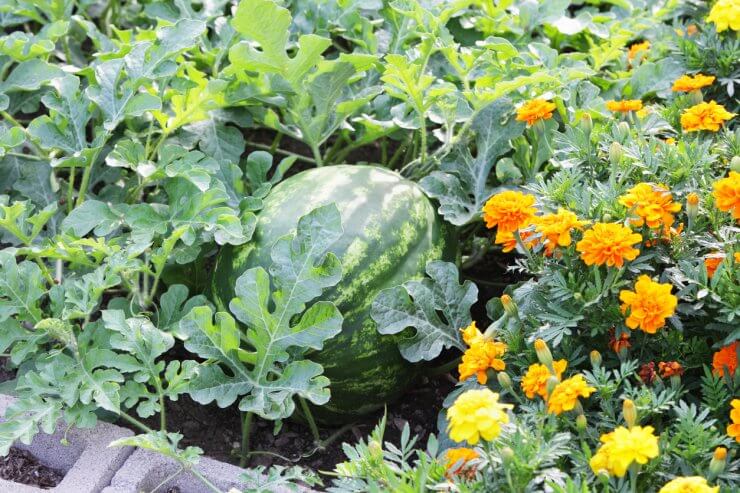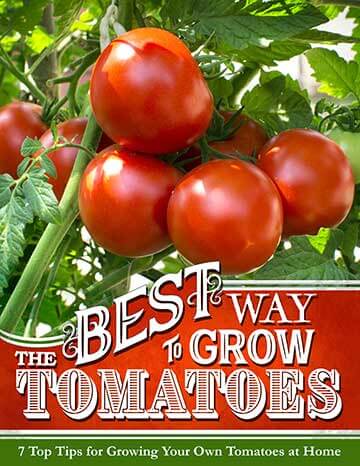
Is your backyard less of a yard and more of a concrete desert? Or maybe the terrain is too rocky or uneven for you to live out your vegetable garden dreams. There’s no reason to throw in your green-thumb-towel yet! There are lots of options to build a garden bed on concrete. Heck, people use cinder blocks to line gardens, so why not use them to build one? With a little strategy and planning, you can have a vegetable garden in a nontraditional space like a cement patio or walkway. Check out these five ways to prep your space and garden bed before you plant.
Pick a location
Take a good look around your yard. Is there a section of your yard that receives 6+ hours of sunlight? Vegetable gardens need a lot of sunlight so it’s best to choose a spot that will get the most coverage throughout the day. If you’re not sure about an exact location or want the option to move your garden bed on concrete, you can build the bed with casters or a furniture dolly attached to the base. Just remember that your garden bed will become very heavy once you start adding layers of soil and compost.
Discover 7 top tips for growing, harvesting, and enjoying tomatoes from your home garden—when you access the FREE guide The Best Way to Grow Tomatoes, right now!
Build or buy your garden bed
There are many plans out there for a DIY garden bed on concrete and there are also kits you can buy from your home and garden store that take some of the guesswork out of it. If you’re looking for a fully constructed system, there are options out there for purchase that come with everything you need to put together your garden bed. If you go the DIY route, pay careful attention to what materials you use for the bottom of your garden bed. I don’t advise directly layering soil on concrete as this will cause the soil to wash away. You can layer landscape fabric over hardware cloth, a rigid mesh material, and staple both into the walls of your garden bed. This creates a slightly suspended, breathable, and drainable flooring.
A garden bed on concrete will drain more water away from the vegetables than garden beds situated in soil. It’s important to use a mixture of materials to retain moisture in your raised beds. On the other hand, if you’re repurposing a container like a wine or a whiskey barrel, don’t forget to add drainage holes since those containers were originally created to hold in moisture.
Choose your garden bed depth
In general, the minimum depth for a vegetable garden is 12 inches. With a raised garden bed on concrete, I recommend closer to 18 inches or more. This added depth will help with moisture retention and allow for deeper root systems to form. This is especially important if you’re planting root vegetables like carrots, potatoes, onions, radishes, etc.
Mix up your soil
A rookie mistake I’ve made in the past is to build a garden bed or container garden and just throw in bagged potting soil. It’s so light and fluffy that it ends up draining too quickly and all of the soil’s nutrients wash away. By adding compost or worm castings to your mix, you increase the number of nutrients and add to the density of the soil. Denser soil helps with water retention. Go ahead and throw a bit of mulch on the surface of your garden bed on concrete. Mulch will prevent surface moisture from evaporating too quickly and keep weeds in check
Do you have a garden bed on concrete in your yard? What has helped your garden grow? Share your ideas in the comments!
Discover 7 top tips for growing, harvesting, and enjoying tomatoes from your home garden—when you access the FREE guide The Best Way to Grow Tomatoes, right now!





Hi. The only place I can have a raised bed is on concrete. I have one 4 x 4 and a a 4 x 4 connected. plus several smaller beds. I have been very successful with mine. The only issues I have are from high temperatures (zone 9 in Sacramento, CA) and too lite of soil, which I am working on to make more dense. I used the rocks and twigs, branches at the bottom, plus compost to give it a good base and be away from the concrete. I need to re due my long bed of 3 4 x 4’s beds. To use from mostly tomatoes and peppers. maybe 2 x 4 x 3 in a U shape design with lattice. Also another minor problem is my garden has to be somewhat on the North East side but still gets 6 or more hours of sunlight. Some areas more that are above the side of the house. Thank you for all the good information on here. Rowan
Question: How well will the plants do on very hot cement? Our summers are HOT!I can’t handle the hot bare ground in bare feet so isn’t cement worse? How do veggies respond?
Moisture retention is key – so make sure your soil depth is at least 18″ and you use mulch to keep water from evaporating too quickly.